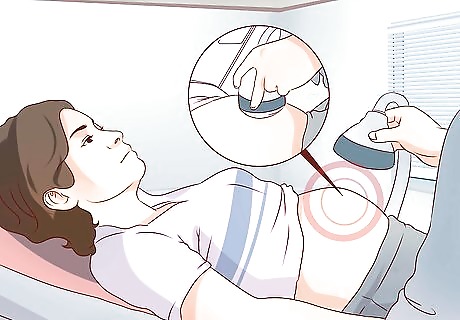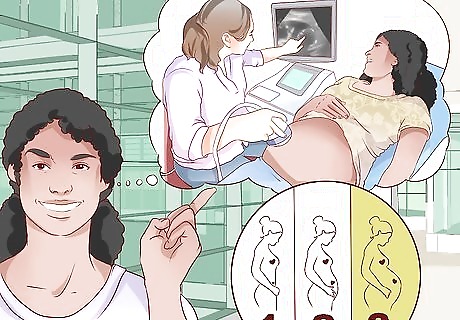
views
Getting Your Baby to Move for the Ultrasound Exam

Drink apple or orange juice about 30 minutes before your appointment. The juices typically don't take too long to absorb into your bloodstream. The sugar in the juices tends to wake up your baby while in utero. Also, if you didn't give up caffeine after finding out you're pregnant, you can opt for a cup of coffee or can of soda. The caffeine enters your bloodstream and might stimulate your baby to move around.

Walk around before your ultrasound appointment. This could help if you feel as though your baby isn't moving and may be asleep. While walking can usually soothe and rock a baby to sleep from an awake state, it might also be able to wake up your baby from its in utero nap.

Cough or laugh during your ultrasound appointment. Coughing and laughing can jostle your baby awake, which can increase your odds of the baby changing positions. It can also help to engage in conversation with the ultrasound technician; however, you don't want to distract them as they are in the midst of important aspects of the ultrasound examination, so ask for permission prior to engaging them in conversation.

Poke the baby gently. The ultrasound tech can use the probe to gently shake your baby and try to get the baby to move to a better position. You can also try using your own hands to jiggle or poke at your baby gently.
Understanding the Purpose and Timing of Different Ultrasounds in Pregnancy

Know that the "first trimester ultrasound" is done anywhere between 10 and 14 weeks. It is used as a method to confirm a pregnancy, or it is also used as a "dating ultrasound" for those women who cannot remember when their last menstrual period was and are unsure of how far along their pregnancy is. What your doctor will look for during this first-trimester ultrasound is a heartbeat, as well as the presence of your baby inside the uterus (checking to make sure there are no pregnancy abnormalities. Your doctor can also use measuring tools on their computer (where the ultrasound is being recorded) to assess what is called the "crown-to-rump length" which is used to date the pregnancy. Not everyone receives a first-trimester ultrasound; rather, it is reserved for those patients whose doctors have early concerns about the pregnancy's success or uncertainty around dates. In general, everyone receives the second-trimester ultrasound which is a much more detailed assessment of their baby and occurs done between 18 and 20 weeks. External sex organs have not developed at this point so the doctor won't be able to determine sex during this ultrasound.

Understand that the "second trimester ultrasound" is more detailed. It is usually done between 18 and 20 weeks, and is able to assess for a variety of things including the baby's sex (in most cases), as well as overall growth and development. It is this second-trimester ultrasound where you will be interested in strategies in getting your baby to move. One particular reason couples are interested in this is that with more movement there is a greater chance the ultrasound technician can determine the sex of the baby (which is of interest to many people). The baby's sex (male or female) can be determined on second-trimester ultrasound by the presence or absence of a penis, which is usually observable with sufficient fetal movement (or if the baby happens to be in a position where this can be seen from the outset).

Be aware that third trimester ultrasounds are rare. They are only done in more complicated cases where your doctor wants to check on the baby (for instance checking fluid levels, getting measurements, or monitoring in special cases such as with gestational diabetes).




















Comments
0 comment